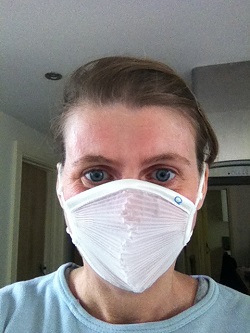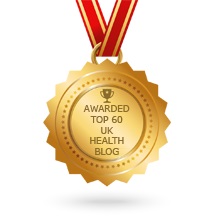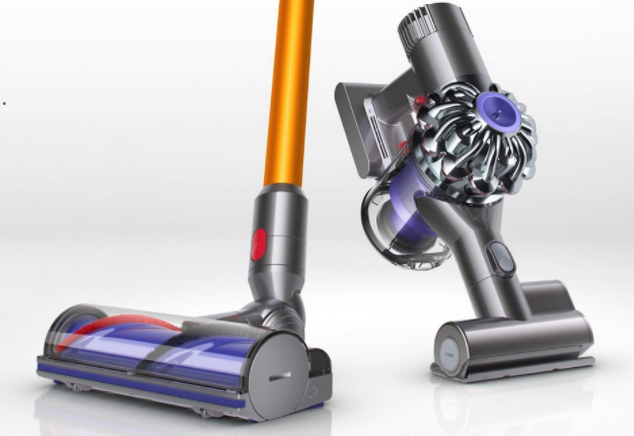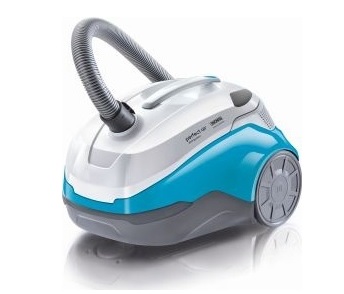Is your house clean and safe? We all probably assume that it is, but there could be some very dangerous things in your home… We insulate our houses and try to make them as air-tight and cosy as possible, especially in winter. Then we stuff them with plug-in air fresheners, fragrances, man-made furniture and fittings etc, which are all treated with fire retardant coatings and can contain glues, formaldehyde, paints and adhesives which all off-gas into your home.
You spray yourself with deodorants and perfumes and treat your clothes with fabric softeners and conditioners which make your wardrobe smell fresh for days. And all of this stuff you are bringing into your home can build up. Some studies even say that indoor air quality in some homes can be worse than outdoor pollution, because we sit in it, live in it, sleep in it and without good ventilation it has the potential for allergens, mould spores and chemicals to really build up.
And when you consider that we spend 90% of our lives in our homes – it’s potentially a life saver!
You don’t want to be wearing a dust mask in your own home!

Some of these things we unwittingly bring into our homes may seem safe, but they can be anything but fresh. All these chemicals, fragrances and perfumes are not good for our bodies.
They are building up inside our homes because of the way we live, especially during winter when we keep all doors and windows closed. Small children and babies are most at risk from respiratory problems, asthma, allergies and worse. We just don’t know what the long term effects of living like this will be to our health.
Fling open your windows people – if only to replace some of the air for a short time in the morning during winter. Improving ventilation can also help with condensation and mould.
It was in the news last week that we should all be very mindful of the indoor air quality in our homes. Read this report by Allergy UK to find out the True impact of indoor air quality.
There are really simple things you can do and I don’t just mean clean your house more often and ditch the plug in air fresheners.
What can you do to minimise risk?
- Furniture – Choose second-hand furniture in good condition which has probably done all its off-gassing already or buy solid wood furniture.
- Flooring – Consider putting down solid wood flooring or natural tiled flooring instead of carpets which can harbour dust, allergens etc. and are harder to keep clean.
- Paint – Don’t be fooled into thinking Low or NO VOC paints are any better. They’re not. They simply off-gas very slowly over their lifetime instead of all up front after painting so steer well clear! Ventilate while painting and you should be OK.
- Ventilate your house – Open bathroom windows to allow steam to escape and close when the room has cooled down and water evaporated. Open bedroom windows in the morning or have them open a chink all night to allow air to circulate.
- Laundry – Dry laundry outside when you can and don’t use fabric softeners to fragrance clothes. They should smell clean but not have a heavy fragrance on them.
- Fragrances and perfumes – Don’t use perfume, hair spray etc. and choose fragrance free products when you can. Think about what you put on your body and your hair – some of it will get absorbed through your skin into your body.
- Extractor Fans – Use the extractor when cooking to get rid of cooking smells, open windows if you don’t have one.
- Clean your house! Don’t think that plug in air fresheners mean your house is clean. Don’t mask a problem with another far worse one. If you house smells damp, of animal odours or just plain dirty it probably needs a good clean… or the root of the mould, damp etc. fixing properly. Make sure you have a good hoover
- Natural cleaning – Use natural products to clean your home like vinegar, soap nuts, fresh lemon, soda crystals and baking soda or try to buy environmentally friendly, fragrance free cleaning products. Choose more eco brands that are better for the environment.
- Air Purifiers – Consider investing in an air purifier to help remove air borne pollutants and allergens. You can buy these from Allergy Best Buys or Amazon Bionaire Compact Air Purifier with Dual Positioning
.
- Natural Candles – Check the ingredients on those Scented Candles – This article in the Daily Mail warns about Scented candles and air fresheners. How your scented candle could KILL you: Perfume ‘can release dangerous cocktails of cancerous chemicals’. For something safer, choose soya or beeswax candles instead, of invest in an oil diffuser and choose only 100% natural essential oils.
- Furnishings – Choose leather sofas, wooden or plastic blinds instead of swags of curtains. Anything with lots of padding, cloth and places for dust mites to hide could be harbouring allergens and dust.
- Bedding – Opt for allergen friendly bedding or things like silk filled duvets. Go for natural fibres and 100% high stitch count bedding in good quality cotton or bamboo. Make sure your pillow is also not harbouring dust or allergens. I use a Sleep Angel pillow. Make sure you have a mattress that’s not too dusty and cover in allergen protective covers if possible. These can also be put over pillows and duvets. Change bedding often and wash bedding on 60 degrees if you have a dust allergy.
- Don’t make the bed – leave covers off in the day to let your bed cool down. Dust mites love a warm bed and the dark, allow the most light and cool air onto your bed to minimise issues.
- Pollen – If you have hay fever you might want to be careful during the pollen seasons. Keep windows closed on high pollen days. I have the Dyson Pure Hot and Cool link air purifier
- Steam cleaners – these can really help. If you steam clean your carpet before hoovering it can really help you get more dust out.
- Pets – If you have them, keep their bedding clean, brush and groom them, preferably outside or in the kitchen where you can clean up any hair and dander. There are brushes now that collect so well and hold the hair till you’re ready to dispose of it in the bin. If you are allergic to dogs there are many breeds that are said to be better and less allergenic such as poodles,
- Dust – Cleaning with an damp ecocloth that you can rewash is so simple and then means you don’t need to use furniture polish or chemical sprays. Keeping on top of the dust in your house
- Indoor plants – This was one of my favourite chapters, looking at the types of plants that will help to remove harmful VOCs and pollutants from your home. They are like magic! They literally eat air pollution for breakfast! Brilliant. There are certain plants that work better, including some beautiful looking ferns and The Money Plant, to name just a few. You can also make your own indoor safe plant fertiliser from eggshells and coffee grounds.
- Joss sticks would be classified under the same category as candles with passive inhalation during combustion. The fine particulate matter and black carbon will still be released, and the smoke can cause respiratory irritation. Now, most of the compounds given off would be from wood and essential oils, so nothing toxic but nonetheless possibly damaging to health. If you are to burn them, just like people do in Chinese temples, I would do so in a nice summers day in the garden so that the smoke is emitted to the environment. I wouldn’t recommend doing it inside unless the room is large and well ventilated, and even then I would suggest infrequent use. The incense sticks in oil are better than the joss sticks for indoors because you’re eliminating combustion, so no soot is produced. I would take a simmer pot or natural rose petals over them any day mind you.
- Dehumidifiers – Can help reduce mould and damp. All you need to do is plug them in and check and dispose of water as it builds up.
- Passive dehumidifiers which work with crystals! The fact it’s collecting a good amount of water shows it’s doing its job, but I guess the question you’re asking me is the safety concern over the crystals themselves and handling them. These are made from purely calcium chloride, so be careful when handling them. Just be careful when you change the crystals to not touch your eyes and keep out of reach of children. The SDS shows they’re safe, but the crystals should be handled with care, gloves and kept in a safe place. You can’t really beat a normal dehumidifier for efficiency, especially if you have to change the crystals every 2-3 months.
- Get outside – Yes even in winter and on rainy days. The more time we spend outside our homes the better. Obviously outdoor air pollution can be a problem, but being inside all the time is not good for us. We are animals at the end of the day and I think we all need to be in nature, getting fresh air and moving and being active outside.
- Mould in bathrooms – It’s important to ventilate your bathroom as it is regularly getting filled with steam from your bath or shower. Opening a window of making sure an extractor fan is activated can really help to reduce the build up of mould or mildew.
Poor indoor air quality can lead to asthma and breathing problems so make sure you think about how you live at home. Is it really a safe haven where you rest, relax and avoid all the allergen triggers that plague you outside? Or are you exposing yourself and your family to many more nasty pollutants without even realising?












Excellent tips. Really useful stuff. Never had an idea about this, will look for more of such informative posts from your side.
Thanks Simon, yeah I had fun researching this. It’s mindboggling how many things we overlook in the home.